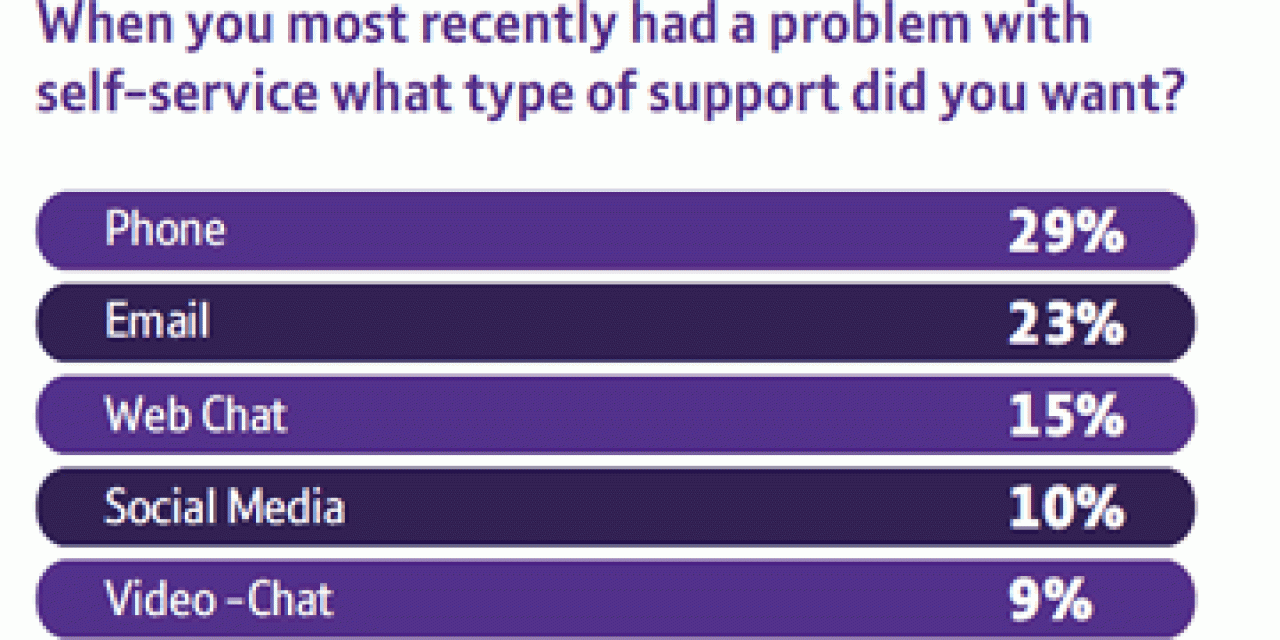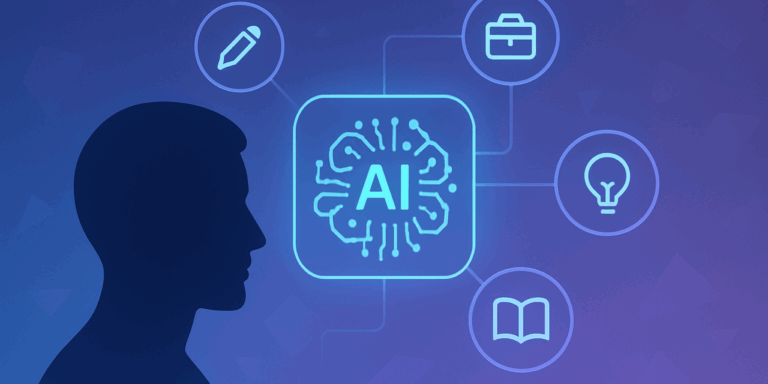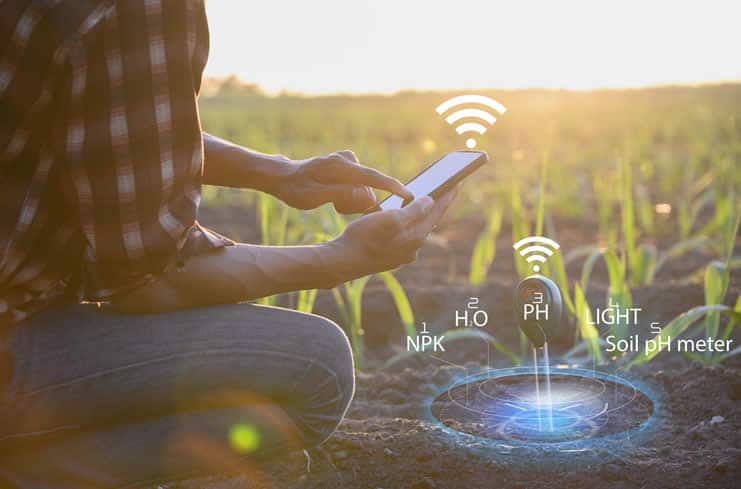Providing good customer self-service possibilities is a must. We have all the possibilities to enable it, customers want it and with smart technologies we dispose of the potential to make it more creative, relevant and a differentiating experience.
Several brands have even succeeded in dramatically lowering customer service costs by tapping into the collective power of connected customers and leverage collaborative approaches with a strong community dimension and dramatical effects for the contact center. Obviously this is not always possible.
Benefits of customer self-service in context
 The future of customer self-service looks good. And it’s not just about lowering support costs. Well on the contrary: by unlocking information that is generated across multiple customer interactions and several channels and sources, customer expectations can be exceeded. Self-learning systems and knowledge bases, as well as ever more smart devices, data and analysis tools, play a role in these evolutions where artificial intelligence becomes more important.
The future of customer self-service looks good. And it’s not just about lowering support costs. Well on the contrary: by unlocking information that is generated across multiple customer interactions and several channels and sources, customer expectations can be exceeded. Self-learning systems and knowledge bases, as well as ever more smart devices, data and analysis tools, play a role in these evolutions where artificial intelligence becomes more important.
The benefits of self-service for businesses are known. Of course they also provide value to customers if properly built and easy to use: they correspond with the changing behavior of a customer who likes to search information and answers on his terms, has more digital tools to do so and doesn’t like to wait all too long, to say the least.
Still, customer self-service also has its limits. Depending on the urgency, nature and overall context of the customer’s issue, self-service gets used more or less. Moreover, self-service alone doesn’t cut it. There are ample situations where customers start with self-service and then want a more personal interaction. We also have to bear in mind the emotional aspect of the request and the bigger picture of the customer lifecycle and/or stage of the service process. Last but not least, it’s clear that there are always exceptions and circumstances where self-service simply doesn’t work and an agent and other channels need to be available.
Assisted self-service in the future of customer service
It’s probably also in this sense that the role of the contact center agent will continue to move: knowledgeable and well trained agents handling exceptions and difficult cases.
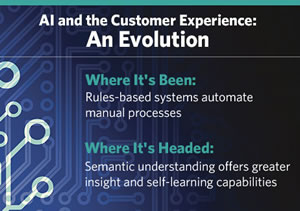
This can be achieved by at the same time treating “easier” requests in automated ways, regardless of the channels customers use: self-service, email, social, you name it. By using artificial intelligence techniques, context is added to inquiries, allowing for faster and better routing, faster response times and more time for staff to focus on the mentioned exceptions. Artificial intelligence is becoming more important in customer service overall: in the automation of processes, in fuelling self-learning capabilities, for insights and in customer relationships as well as case and inquiry handling.
Is self-service the future of customer service? Some tend to believe so. However, we’re certainly not there yet if we ever will be. On top of the fact that certainly not all companies offer it in a good way and thus deliver disappointing self-service experiences the main reason why self-service is not the only solution is the context mentioned before.
The third edition of research by Avaya and BT, ‘The Autonomous Customer‘ clearly explains it well as you’ll read below.
Context is everything
Customers want to be able to easily switch between channels, depending on their context in the broadest possible sense: where they are, which device they are using, what else they are doing at the same time, the nature of their support request, the emotional dimension, the sense of urgency, their personal preferences – anything contextual.
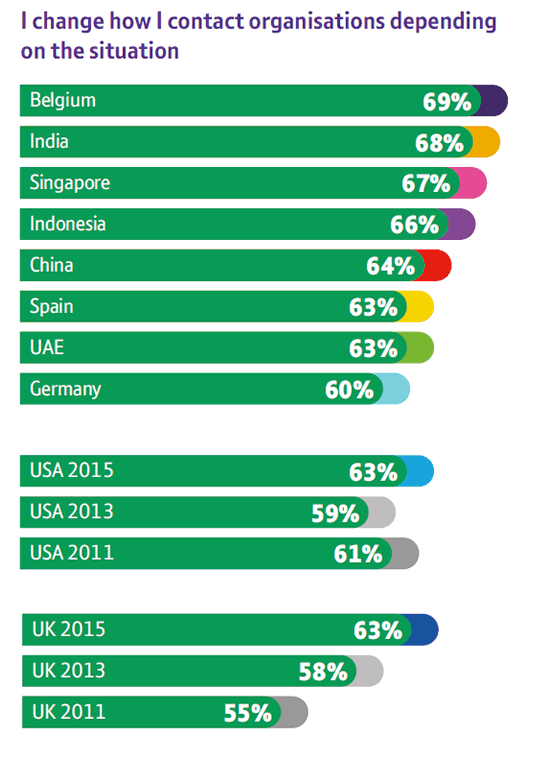
Context is really the key in customer service but also in other business areas and certainly information management. Context-aware technologies continue to bring together the worlds of information management and ECM on one hand and customer service and customer experience management on the other.
As a matter of fact, it’s also this highly contextual dimension, along with the rising penetration of specific technologies, channels and devices that drives the demand for omni-channel customer service. The illustration shows how respondents change how they contact organizations, depending on the situation. There are regional differences but they are relatively small.
When looking closer at self-service we see that, even if customers want it and even if it’s well organized, they want to have other possibilities as well. And they especially do so in case something goes wrong.
Supported self-service: from omni-channel to omni-touchpoint
“Self-service is only attractive if supported”, the report says. And then comes the surprise: between the edition 2015 and 2013 of the research there has been a slight decrease in percentage of respondents in the UK and US agreeing that ‘self-service is good as it puts me in control’.
This is not really an issue of self-service as such. It seems that people knowing that, while organizations are ready to let them serve themselves, they often don’t support them adequately when things indeed do go wrong.
Supported or assisted customer self-service is the name of the game. In practice this means customers also want other channels or contact methods when they have a problem with self-service. In 29% of cases that’s the telephone, followed by email (23%) and web chat (15%).
In other words: omni-channel is the way to go and the good old customer service interaction basics do matter, self-service or not. A large majority of respondents still wants to see that phone number on every page of the company’s website, to give just one example. In that broader movement and the preferences of customers it’s also time to shift the focus from the channel to the touchpoint as it matters for customers who become channel-agnostic in an increasingly mobile ccontext. In other words: move from omni-channel customer service to omni-touchpoint service.
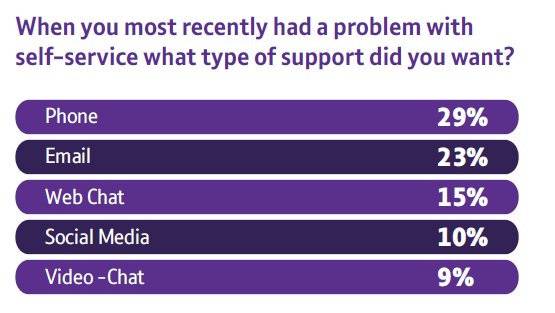
Getting the basics right: some reminders
For businesses seeking to optimize their customer service, essentially the priority we all should have, it’s crucial to get customer self-service right.
On top of having other contact possibilities, enabling a smooth change of channels and so on a few reminders:
- Make the self-service platform easy to use and focus on excellent search capabilities.
- Get the most up-to-date information up there and ideally integrate your self-service platform and system with answers provided across other channels – if possible automatically using a knowledge base.
- Keep a close eye on what customers seek in your FAQ sections and self-service platforms to provide answers to questions you don’t cover (well enough).
- Don’t just focus on cost reduction. Today it’s all about customer service as a value generator.
- Provide community possibilities if possible and ‘listen’ to the questions asked in possible communities, to your staff and other channels. Making it an automated process that drives relevance of self-service does help.
- Connect the data and channels to ensure personalized possibilities where possible and needed.
PS: also be transparant about the use of data and consider options to give customers (digital) access to their data and status updates in all steps of the service process, in case management and across other processes. They want it and it’s even a differentiating factor, making them switch providers as we’ll cover soon.
Top image purchased under license from Shutterstock
